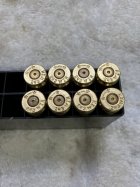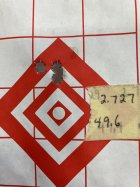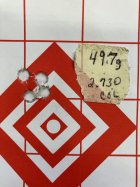Ok first time posting! I have a 243 with a Carbon 6 barrel and have about 100 Shots through as of now. I bought 2 bags of Starline brass and after some brake in shots and cleaning I figured I’d do some powder and seating testing. Gun shoots 3 shot groups around a half inch with a COAL of 2.730. I didn’t hang bullets out farther than that because I’m shooting Nosler 70BTs and was trying to keep close to.243 length in the case neck. So here’s the problem, I’m now starting to reload my once fired brass to hopefully get down to some bug hole groups. I bumped the shoulders back .002 and used the same powder charge combo as before and my group suck. Also something else I’ve noticed is my velocities keep dropping every shot after my initial shot with my once fired brass. And no I don’t believe it’s my chrony cause I shot another gun right after and the velocity held steady.
1st 3727
2nd 3679
3rd 3664
4th 3643
A&D EJ-123 powder scale.
Any suggestions/ help would be appreciated! Thanks
1st 3727
2nd 3679
3rd 3664
4th 3643
A&D EJ-123 powder scale.
Any suggestions/ help would be appreciated! Thanks
















